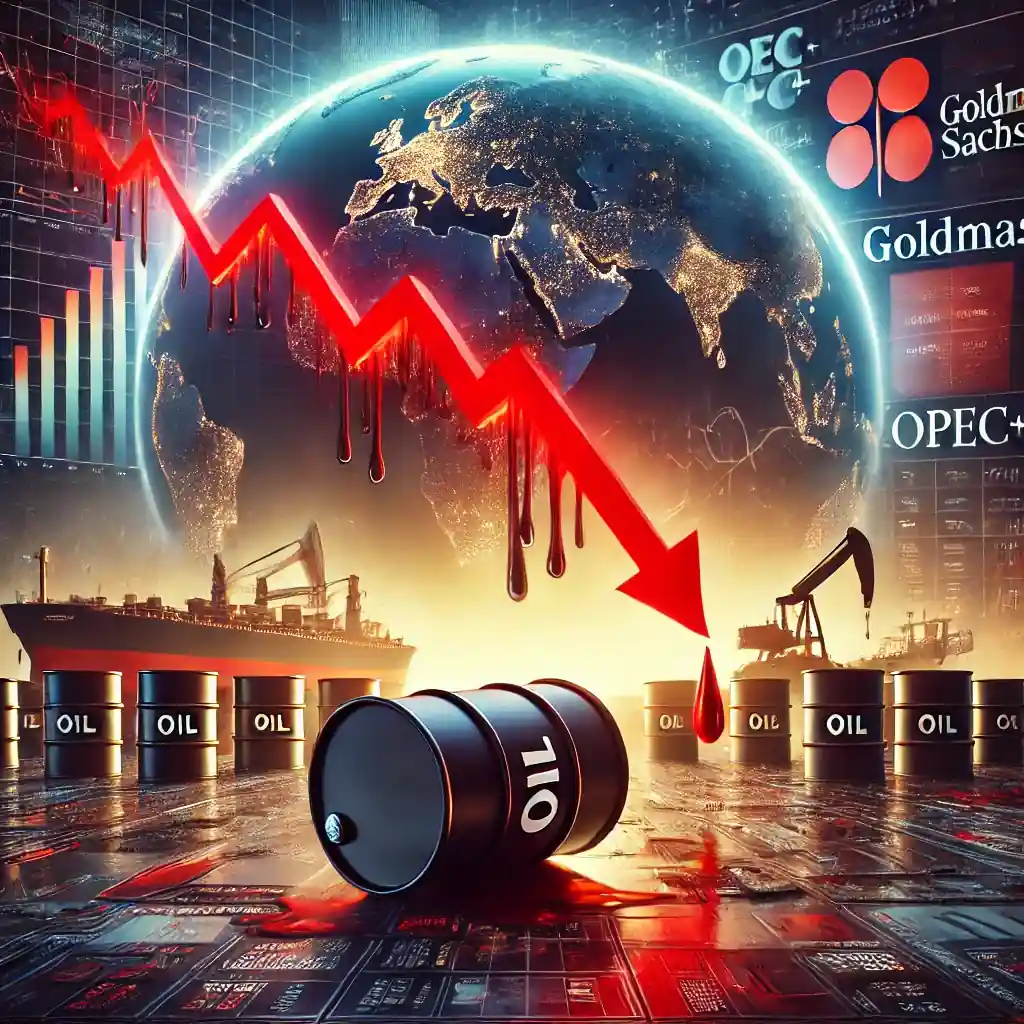Goldman Sachs Lowers Oil Price Forecasts
Goldman Sachs has cut its oil price forecasts, citing a combination of rising OPEC+ supply and weakening demand from global markets. The new forecast comes amid declining oil prices and an increasingly volatile macroeconomic environment driven by tariffs and geopolitical risk.
Brent crude is now expected to reach just $71 per barrel by December 2025. That’s a $5 reduction from previous projections, according to analysts at Goldman Sachs led by Daan Struyven.
Oil Prices Slump on Oversupply and Weak Demand
The decision follows a steep $10 drop in oil prices since January highs. Several factors are to blame, including sluggish demand from top importer China, strong global oil supply, and escalating trade tensions involving the U.S.
“Medium-term risks to our forecast remain to the downside given further potential tariff escalation,” the Goldman report stated. Analysts also noted that longer-than-expected production increases from OPEC and its allies could worsen the oversupply.
OPEC+ Output Boosts Add Pressure
Oil traders worldwide are turning bearish. Trading giants like Vitol Group and Gunvor Group now predict prolonged oversupply conditions. The International Energy Agency (IEA) expects an oil surplus of 600,000 barrels per day this year—roughly 0.6% of global daily consumption.
OPEC+, led by Saudi Arabia and Russia, has pledged to increase shipments, even as demand weakens. This production boost is putting downward pressure on oil prices and altering global energy dynamics.
Goldman Sees Modest Oil Recovery Ahead
Despite the bearish trend, Goldman Sachs remains cautiously optimistic about oil in the short term. The bank expects oil prices to recover modestly in the coming months, assuming U.S. economic growth stays resilient and sanctions on oil-producing nations persist.
Brent is projected to trade in a range of $65 to $80 per barrel, with an average of $68 throughout 2026. “We believe U.S. GDP will remain solid enough to support modest oil demand,” Goldman analysts noted.
Tariffs and Trade War Threaten Oil Market Stability
President Donald Trump’s ongoing tariff war continues to rattle global markets, including the oil sector. With no resolution in sight, concerns are mounting that higher import costs and slower trade flows will reduce economic activity—and, in turn, demand for oil.
Goldman Sachs flagged tariff escalation as one of the biggest risks to oil prices, alongside prolonged OPEC+ production increases. Any easing in these trends would be needed for a sustained price rebound.
Geopolitical Risks Keep Oil Traders on Edge
While demand worries dominate headlines, geopolitical risks still play a role in oil pricing. Recent U.S. military strikes against Houthi targets in Yemen have intensified regional tensions. The group’s continued disruption of Red Sea shipping poses risks to energy supply chains.
Although sanctions on Iran and Venezuela remain intact, markets are watching for potential changes. However, Washington has given no indication of relaxing its sanctions framework, meaning supply constraints could resurface.
Global Oil Demand Growth Slows Sharply
Goldman Sachs also downgraded its forecast for global oil demand. The bank now expects demand to grow by only 900,000 barrels per day in January, down 18% from previous expectations.
This reduced outlook reflects global economic uncertainty, tariff-induced slowdowns, and ongoing demand softness in emerging markets.




